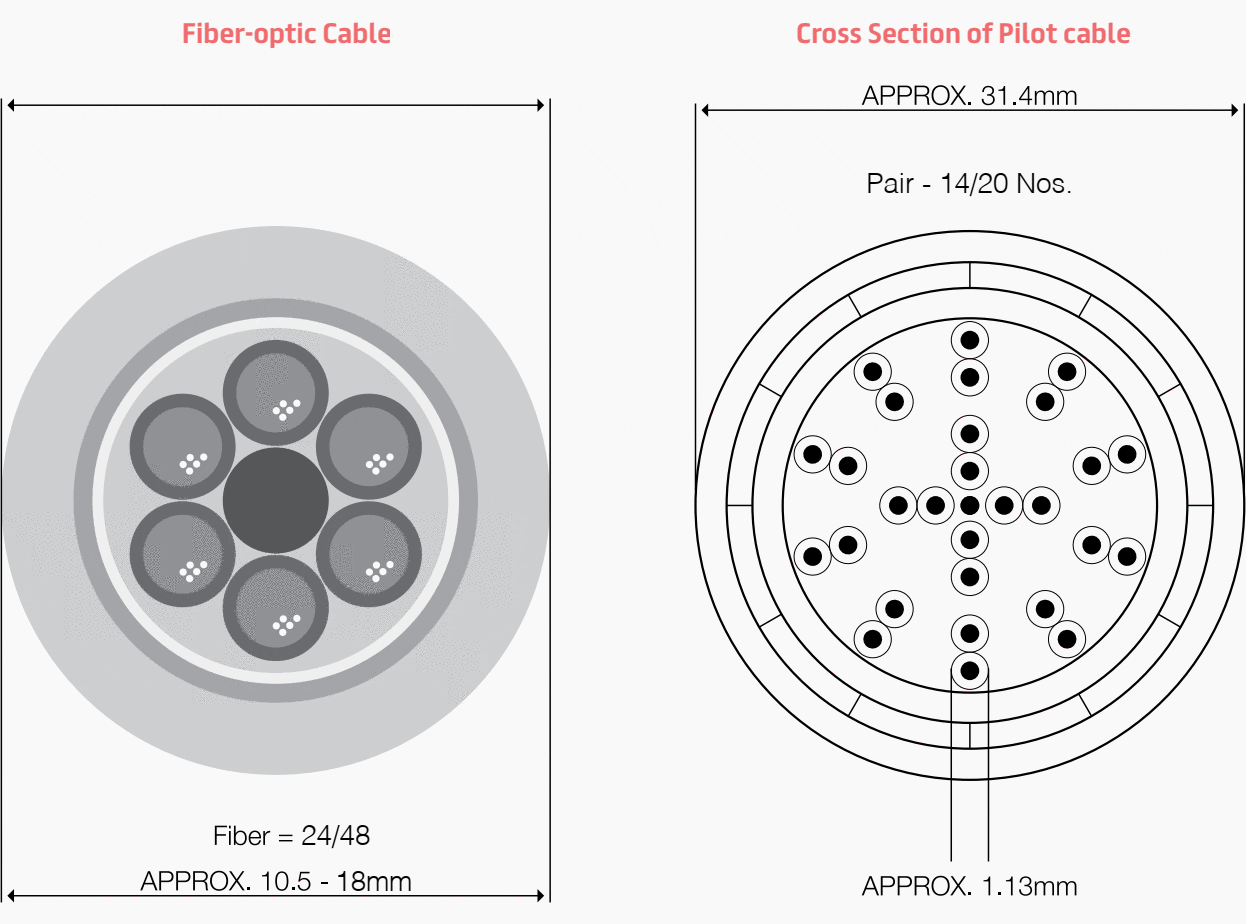Avoiding accidents and blackouts
This book is a guide to the protection regulations for extra-high-voltage (EHV) overhead lines and underground cables for contractors, consultants, strategic partners, as well as anyone who is working on or near DEWA’s electricity transmission network.

It provides the necessary information to ensure that their projects conform to these regulations and what information, documents and other criteria must be provided to ensure their successful completion.
How this book will help you?
Transmission lines and equipment
Types of Cables
There are two voltages for underground cable – 400kV and 132kV. Currently, DEWA uses XLPE cables (Figure a and b), and also uses oil-filled cables (Figure c) in some areas.
Please note that power cables cannot be detected by cable detectors when shutdown or out of service.
- 400kV XLPE Cable
- 132kV XLPE Cable
- 132kV Oil Filled Cable

There are two types of communication cables:
- Fiber-optic cable
- Pilot cable
Note that Fiber-optic and Pilot cables cannot be detected by cable detectors, even when live.

Cable Equipment
Cable Joints
Cable joints are integral parts of the Transmission underground lines system as a whole. Note that a joint is a sensitive point in transmission cable systems. The joint area to be maintained and protected properly to ensure reliability of power supply.
A power cable joint is normally enclosed in 2.4 metre wide concrete troughs. A few joints are enclosed in troughs, with some access from manholes.
Joint locations are identified with red and white route markers for all types of installation.
| Title: | Handbook on EHV overhead lines and underground cables – Transmission Maintenance department; Power division; Dubai Electricity and Water Authority |
| Format: | |
| Size: | 4.8 MB |
| Pages: | 91 |
| Download: | Here 🔗 (Get Premium Membership) | Video Courses | Download Updates |
Suggested Course – ETAP Power System Design and Analysis Course: Learn To Resolve Power System Issues
ETAP Power System Design and Analysis Course: Learn To Resolve Power System Issues


Hello – new member query – which article or reference i can quickly get this information below:?
Can you share more on cables : Insulated cables for example PVC/Sheaths/water blocking/XLPB/discharge tape and many such components. Is the oil freely flowing does it not bubble or is it under pressure .
Gas: i just never seen any and would appreciate any info /pics and useages
For non insulated cables used in aerial – they must meet expansion and sag limits , tension and weight, is a 132kV aerial cable the same as a 400kV cable ? also how is bundling maintained and achieved and decided on 2-3-4 cores ?
very good information for HV TRANSMISSION
Thanks for you’re sharing.
This content is taken from DEWA hand book available in Google it is familiar isn’t it right.
You are right, this is DEWA (Dubai Electricity and Water Authority) guide as is it is stated below. This guide and every other guide at EEP can be found by searching Google :)
nice concept but it is difficult because already transmission lines are there but why you want underground.